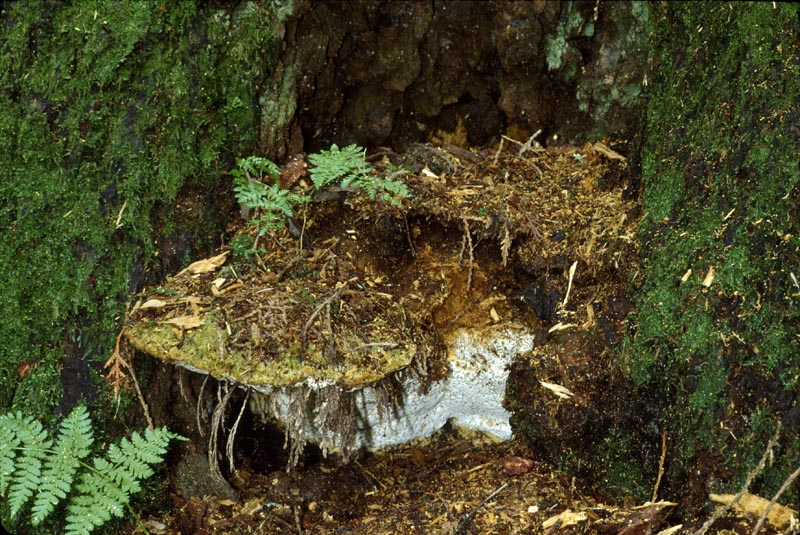Distribution: B. nobilissimus is very rare, known only from forests of western Washington and Oregon, and is a protected species in both states.
Habitat: Occurs primarily on very old noble fir, at the base of living trees and snags or on top of stumps.
Conservation Status: Review Group 1 in Washington (WANHP)
Bridgeoporus nobilissimus is the largest and most spectacular polypore in western North America. It causes a brown-rot and occurs primarily on very old noble fir, at the base of living trees and snags or on top of stumps. Its fruitbodies are perennial and can form massive shelves up to 1.5 m (5 ft.) wide. The upper surface is covered by a mat of coarse fibrils that are white at first, become brownish, and then often greenish due to the presence of algae among the fibrils. As the fruitbody expands at the edge or from a short stout base, it can engulf plants or woody debris such as twigs. Plants may also grow on its surface. The flesh is ivory colored and corky and the layers of tubes are stratified and separated from one-another by thin layers of flesh. This sterile layer makes the lower surface smooth initially, but soon small, ivory to buff, circular to angular pores develop, which may become pale brownish in age.
Sources: Trudell, Steve and Joe Ammirati. Mushrooms of the Pacific Northwest. Portland, Timber Press, Inc. 2009.
PNW Herbaria: Specimen records of Bridgeoporus nobilissimus in the Consortium of Pacific Northwest Herbaria database.
CalPhotos: Bridgeoporus nobilissimus photos.



